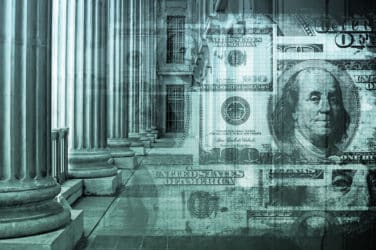Summertime?
“Drums please, summer, summer, summertime. Time to sit back and unwind” proclaimed the Fresh Prince of Bel Air, Will Smith, in his 1991 summer anthem “Summertime”. For investors, Mr. Smith’s interpretation of how to spend summer may not be possible.
Typically, summer is the slow season for investors, marked by subdued trading volume and light news flow. This year, investors may be postponing their vacations a bit due to anxiety surrounding a potential “Brexit”, a contentious and polarizing US Presidential election, and the fact that the Federal Reserve may surprise markets with a rate hike at the June meeting.
Expectations of a June hike have been volatile in recent weeks as investors try to decipher Fed speeches and conflicting signals in economic data and global markets. At last check, investors were pricing in only a 15 percent chance of a rate hike at the June meeting, according to CME Group FedWatch, down from over 30 percent just one week ago.
So, investors appear confident the Fed won’t act this month, yet there are signals the central bank could set off some early fireworks before the July festivities, as evident by recent Fed rhetoric1 . As the June meeting draws closer, the Fed will need to take into account that the fact that while unemployment is at 5 percent, Q1 GDP is below 1 percent, and inflation still remains below their 2 percent threshold2 .
Looking ahead, what does all of this mean for investors? We believe the takeaway is to tread lightly. Construct portfolios that are diversified, with a portion of the asset allocation carved out for a position to protect on the downside.
Bonds Sit atop the Iron Throne
Fixed Income ETFs are taking in assets at a record setting pace, amassing $15 billion more than at this time last year. Additionally, these bond exposures have taken in $50 billion more than equities so far in 2016, even though equity ETF assets under management (AUM) outnumber fixed income AUM by nearly $1.3 trillion!
The influx of interest into bond based ETFs can be attributed to three factors:
• Investors seeking stability in light of heightened volatility and a high level of geopolitical uncertainty;
• The potential demand for any income in an world where over $9 trillion of global debt carry a negative yield3 ;
• The cost efficiency of using a bond ETF as opposed to trading individual bonds.
Broader the Better
Funds with a Global focus were the lone bright spot in the month of May, and are one of the three categories now positive for the year. It is clear investors are favoring broader exposures to US, International, or globally-focused funds, rather than dissecting different regions, countries. This makes sense, as there has been a clear bifurcation of returns across various countries and regions. At the end of May the US is positive for the year, but other major equity markets such as the UK, Japan, China, and Germany are all down, in USD terms.
No Support for Tech
During the month of May the best performing sector was Technology4 , registering a 4.7 percent increase. However, investors did not make a bid for this “growth” segment of the market, as there was -$1.5 billion worth of outflows during the month, bringing the year to date total close to -$5 billion. The uptick in the spot price of oil5 , which surpassed $50 a barrel for the first time in seven months6 , may have been the catalyst for interest into this commodity sensitive segment of the market, as sector returns were negative7 and firms reported a 16 percent decline in earnings for the first quarter8 .
The Tradition Continues, Sort Of…
With central policy still relatively uncertain and bond market volatility increasing during the month, investors favored the more traditional Aggregate bond exposures. However, the “non-traditional” – such as Bank Loans, Municipals, and Preferred Stock – saw inflows as the thirst for yield may not only be quenched by an exposure such as the Barclays U.S. Aggregate Bond Index, as it carries a paltry yield of 2.2 percent9 . F
No Love for Junk?
The outflows in the high yield segment of the market coincided with a decline in credit spreads, which now stand at 608 basis points 10, some 32 percent below the 2016 peak reached in February. The presence of outflows and a decline in spreads do not portend to a groundswell of negativity on high yield, but to the likelihood of a small number of tactical investors exiting the market after a 13 percent rally since the market bottomed on February 11 of this year.
Smack Dab in the Middle
With the Fed striking a relatively more hawkish tone during the month, investors did not favor the long end of the curve. Conversely, investors looked toward the more intermediate segment of the curve. In this space, the yield per unit of duration is more ideal, given that intermediate treasuries yield 1.8 percent and carry a duration of 8 years12, compared to long term treasuries 2.5 percent yield and duration of 17 years13
Golden Days
Amidst a backdrop of slowing growth, geopolitical instability, and spikes in broad based market volatility there has been a clear preference for precious metal focused ETFs. Namely funds focused on gold. Gold ETFs have amassed over $10.9 billion so far in 2016, the most assets taken in by gold related ETFs through the first five months of the year.





